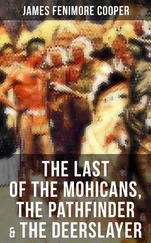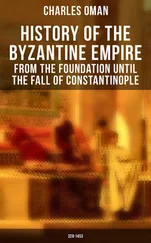Lars Brownworth - Lost to the West - The Forgotten Byzantine Empire That Rescued Western Civilization
Здесь есть возможность читать онлайн «Lars Brownworth - Lost to the West - The Forgotten Byzantine Empire That Rescued Western Civilization» весь текст электронной книги совершенно бесплатно (целиком полную версию без сокращений). В некоторых случаях можно слушать аудио, скачать через торрент в формате fb2 и присутствует краткое содержание. Год выпуска: 2010, ISBN: 2010, Издательство: Random House, Inc., Жанр: Старинная литература, на английском языке. Описание произведения, (предисловие) а так же отзывы посетителей доступны на портале библиотеки ЛибКат.
- Название:Lost to the West: The Forgotten Byzantine Empire That Rescued Western Civilization
- Автор:
- Издательство:Random House, Inc.
- Жанр:
- Год:2010
- ISBN:9780307407962
- Рейтинг книги:3 / 5. Голосов: 1
-
Избранное:Добавить в избранное
- Отзывы:
-
Ваша оценка:
- 60
- 1
- 2
- 3
- 4
- 5
Lost to the West: The Forgotten Byzantine Empire That Rescued Western Civilization: краткое содержание, описание и аннотация
Предлагаем к чтению аннотацию, описание, краткое содержание или предисловие (зависит от того, что написал сам автор книги «Lost to the West: The Forgotten Byzantine Empire That Rescued Western Civilization»). Если вы не нашли необходимую информацию о книге — напишите в комментариях, мы постараемся отыскать её.
Lost to the West: The Forgotten Byzantine Empire That Rescued Western Civilization — читать онлайн бесплатно полную книгу (весь текст) целиком
Ниже представлен текст книги, разбитый по страницам. Система сохранения места последней прочитанной страницы, позволяет с удобством читать онлайн бесплатно книгу «Lost to the West: The Forgotten Byzantine Empire That Rescued Western Civilization», без необходимости каждый раз заново искать на чём Вы остановились. Поставьте закладку, и сможете в любой момент перейти на страницу, на которой закончили чтение.
Интервал:
Закладка:
Tempers were not improved when early the next year the ambassadors of this boorish Frank arrived in Constantinople with a startling marriage proposal, offering their monarch’s hand to Irene. The empire would again be united under a single hand, they said, and Irene could rule like a new Theodora over both the East and the West. To the shocked Byzantine courtiers, the only thing more insulting than the arrogance of the barbarian envoys was the fact that Irene actually appeared to be seriously considering their proposal. Now almost universally hated in her own domains, she felt the walls closing in, and this seemed like the perfect escape.
Her subjects, however, had no intention of letting Irene turn over their empire to this barbarian pretender, and they moved quickly to get rid of their discredited monarch. Irene hardly bothered to resist. After a lifetime spent tenaciously gripping power, she was a spent force and was overthrown by a group of patricians with barely an effort. Imprisoned tamely in the palace that she had so recently commanded, she waited quietly while the assembled populace in the Hippodrome acclaimed one of her ministers of finance as emperor, and then obligingly headed into exile on the Aegean island of Lesbos.
Irene’s fall brought an end to more than just a tired regime. Her reign marked the last time Christendom had a single, undisputed temporal head and saw the final collapse of the old Roman world. Her empire bore little resemblance to the proud state of Augustus, and the differences were more profound than the empty treasury and ruined economy that her shortsighted attempts to buy popularity had brought. The old order had lingered in the East long after its light had gone out in the West, but raids and plagues had taken a heavy toll even as the unrelenting attacks of Islamic armies had robbed the empire of Spain, Syria, Palestine, Egypt, and North Africa.
What had begun with the shattering advance of Islam had been completed with the coronation of Charlemagne. Byzantium had been subjected to tremendous pressures, both spiritual and physical, and every level of society had been transformed. No longer was it the confident master of the Mediterranean, straddling the warm shores that had given it birth. The last traces of that classical empire of Constantine and Justinian had disappeared in the wreckage of Irene’s rule, and the enemies pressing in on every side threatened its very existence. It was too late to try to undo the damage. Byzantium would either adapt or be extinguished.
*The old Senate house was gradually absorbed by the Great Palace and used as an audience chamber. The Senate itself, however, did continue to exist and was occasionally used to sit in judgment of high-ranking individuals. Though its prestige and responsibilities were reduced to insignificance by the ninth century, there were still senators present on May 29, 1453, to defend the empire on its last day of existence. *Just before the iconoclastic controversy broke out, imperial tradition had been to put images of Christ on the coins. Since Irene had just restored icons to favor, she was expected to celebrate it with her coins, but ambition appears to have trumped piety. *This lesson wasn’t lost on the shrewd Charlemagne, but the deed was done and there was nothing for the irate monarch to do. A thousand years later, when it came time for his own coronation, Napoléon made sure he crowned himself.†It was probably written a few decades before Leo used it, and it remained a standard weapon in the papal arsenal until the humanist Lorenzo Valla conclusively proved it a fake in 1440.
15

T HE T URNING T IDE
As if to underscore the empire’s peril, a new and deadly threat arrived at the dawn of the ninth century. A great warlord crossed the Carpathians and hammered together the Bulgars from Transylvania to the Danube, forging the first great Bulgarian empire. Known only as Krum, the terrible khan swatted aside the Byzantine armies sent against him, killing one emperor and managing to cause the overthrow of another. *Meeting scarcely any resistance, his soldiers fell on the rich cities of the Black Sea, carrying off entire populations into captivity and threatening to completely overrun the Balkans. Even Constantinople seemed poised to fall to the all-conquering khan, but its walls proved to be too stout, and the disappointed Bulgarian had to satisfy himself with leveling the suburbs and killing every living thing that wasn’t quick enough to get out of the way.
Fortunately for the empire, the menace of Krum, like that of Attila before and Genghis Khan after, was based more on personal charisma than underlying strength, and after the khan’s death it evaporated as quickly as it had appeared. The humiliations suffered from such an unexpected direction, however, impressed themselves deeply on the frightened citizens of the empire and led to a second flirtation with iconoclasm. Whatever else could be said about the iconoclastic emperors, they had been remarkably effective militarily, and that prowess now seemed sorely needed. Less than a decade after Irene’s death, a mob interrupted a service in the Church of the Holy Apostles by breaking into the ornate marble tomb of Constantine V and begging the great iconoclast to rise from the dead and lead the Byzantine armies to victory again.
Unfortunately for the empire, however, consigning its works of art to the flames did little to strengthen its military. After several decades of relative quiet, the caliphate resumed the offensive, and the imperial army proved just as incapable of stopping them. In 826, a Muslim force landed on Crete, imposing Islam on the reluctant population and turning the capital of Candia into the busiest slave market in the world. By 838, the Muslims had burst into Asia Minor, sacking the city of Amorium and burning most of its citizens alive in the city’s church, where they were trapped. *The next year, most of western Sicily fell and the Arabs crossed into Italy, conquering Taranto and using the heel of the Italian boot as a base from which to launch attacks against what is now the Croatian coast. The imperial government was so alarmed that it sent envoys begging the western emperor Louis the Pious for help, but the crusading spirit was still more than two hundred years in the future, and the talks came to nothing.
Ignoring the mounting evidence to the contrary, emperors continued to stubbornly insist that iconoclasm was the only way to restore divine favor to the imperial armies. One emperor even personally administered beatings to two Palestinian monks who refused to destroy their icons, and when a week of such treatment failed to induce them to change their minds, he had insulting verses tattooed on their faces and exiled them to Anatolia. Such ham-fisted measures have never been particularly successful where religion is concerned, and without the argument of victory to bolster it, iconoclasm was a spent force. Most Byzantines realized that they had destroyed their icons and starved their artistic senses in vain. In 843, after less than three decades, iconoclasm disappeared again with barely a whimper. On the first Sunday of Lent that year, the beautiful and brilliant empress Theodora officially ended Byzantium’s last major religious controversy by holding a general church council and a service of thanksgiving in the Hagia Sophia. *Artists once again picked up their brushes, hammers, and chisels and resumed their attempt to portray the divine in paint, wood, and stone. Several years passed before the first icon appeared in the great church of the Hagia Sophia, but its unveiling clearly demonstrated that the years in exile had done nothing to diminish the power of Byzantine art.†
Читать дальшеИнтервал:
Закладка:
Похожие книги на «Lost to the West: The Forgotten Byzantine Empire That Rescued Western Civilization»
Представляем Вашему вниманию похожие книги на «Lost to the West: The Forgotten Byzantine Empire That Rescued Western Civilization» списком для выбора. Мы отобрали схожую по названию и смыслу литературу в надежде предоставить читателям больше вариантов отыскать новые, интересные, ещё непрочитанные произведения.
Обсуждение, отзывы о книге «Lost to the West: The Forgotten Byzantine Empire That Rescued Western Civilization» и просто собственные мнения читателей. Оставьте ваши комментарии, напишите, что Вы думаете о произведении, его смысле или главных героях. Укажите что конкретно понравилось, а что нет, и почему Вы так считаете.












